- Home
- Paul Doherty
Isabella and the Strange Death of Edward II Page 10
Isabella and the Strange Death of Edward II Read online
Page 10
FOUR
The She-Wolf Triumphant
‘Quo audiens, Populus universus, unanimo, manus extendetes, clamabat, Fiat! Fiat!’ – ‘On hearing which all the people, unanimously, hands extended, cried “Let it be! Let it be!” ’
The reaction of Parliament, January 1327, to
Archbishop Reynold’s declaration that
Edward be deposed
Isabella’s and Mortimer’s loathing for Hugh de Spencer the Younger was given full vent in his gruesome death. The fallen royal favourite had no illusions about what was in store and tried to starve himself to death.1 Exhausted by his sudden collapse from power, flight across England and wandering through Wales, de Spencer was already in poor shape. The Queen would have liked to have taken him back to London and displayed him before the mob, but did not want to risk him dying on the way, either from sheer weakness or by committing suicide. De Spencer’s son-in-law, the Earl of Arundel, had already faced summary execution at Hereford and the same city was therefore chosen for the public humiliation and execution of Hugh. First, he faced a military tribunal composed of Lancaster, Mortimer and other lords: a list of charges were read out, encompassing all his crimes since 1321. His treatment of Isabella figured high in these. He was blamed for the collapse of the Queen’s marriage, coming between man and wife, of humiliating Isabella, seizing her estates and wealth and bribing the French court against her.2
De Spencer, like his father, was not given a chance to reply and he was too feeble to protest. He was found guilty and taken to the gates of Hereford. There he was dragged from his horse, his clothing stripped off him and the surcoat bearing his arms reversed. A crown of nettles was fashioned and forced on his head. His enemies drew knives and scratched into his bare skin verses from the scriptures denouncing his evil arrogance. He was then forced back on his horse and led into the city to the bray of trumpets and the mocking tunes of a bagpipe. The mob were allowed to have their way. Everything at hand was hurled at both him and his marshal, Simon of Reading, who was forced to walk in front carrying de Spencer’s disgraced, polluted standard. The fallen favourite was suffering so much that, according to one chronicle, such a horrid sound came from him as had never been heard before. Judgement was again pronounced. De Spencer was dragged off his horse, tied to a sled pulled by four horses, and taken into the town square to be hanged on a specially erected gallows fifty feet high. Still conscious, he was cut down, his body sliced open, his intestines plucked out and burnt before his eyes before decapitation put an end to his pain. Simon of Reading, his marshal and principal henchman, was despatched on a smaller gallows next to him. The entire proceedings were watched by the Queen, Mortimer and others, who feasted and celebrated. De Spencer’s head was sent for display in London, the quarters of his corpse to different cities of the realm.3
For the rest of de Spencer’s supporters Isabella and Mortimer acted with restraint. There was no witch-hunt, no general purge. Many were pardoned and the clerks, the civil service, who had been so close to Edward, de Spencer and leading ministers like Stapleton, were allowed to continue in office. But Edward and de Spencer’s households at Westminster and the Tower of London were ransacked and £8000, an incredible sum at that time, was seized, with Isabella and Mortimer acquiring the lion’s share.4
Supporters were rewarded, lands restored, prisons opened and some form of compensation was paid to the victims of the de Spencer reign of terror. Isabella and Mortimer now faced one serious problem. Nobody would mourn de Spencer but the imprisoned King was a different matter. He was the Lord’s anointed, their tenant-in-chief. Medieval lawyers could draw a distinction between the Crown and its wearer but how could the two be separated? Edward of Caernarvon was King by primogeniture and God’s grace; he was the ‘Christus’, the Anointed One. In the eyes of medieval man, the coronation ceremony was very similar to a marriage and ‘what God has joined together no man should put asunder’. And, of course, there was the more sensitive problem of Isabella’s adultery. She may have been much suspected but nothing was ever proved. Now that de Spencer had been removed, surely the King could reign once again and the Queen rejoin her husband?
Meanwhile Edward II was being held in honourable custody by his cousin Henry of Lancaster. He had reigned for almost twenty years, he’d shown himself to be feckless, but he had also shown that he never forgot. If released, he would eat humble pie, bow and beg, accept any conditions. Nevertheless, time would pass and Edward, once again, would plot revenge. He was only forty-five years of age; his father had lived to be sixty-eight. New favourites might emerge?
Isabella had murder in her heart. De Spencer had been killed. Why couldn’t Edward die as well? Like de Spencer, he, too, had committed hideous crimes and brought the kingdom to its knees. She had to move quickly. Already the flush of victory was fading, secret sympathizers of Edward were emerging while Isabella was having to face the hard grind of government. Robert the Bruce had been held back by a secret agreement between himself and Isabella,5 but there were other, equally urgent problems. London had risen in rebellion. De Spencer’s agents were being taken and beheaded in the streets. Bands of rifflers, robber gangs, roamed the city pillaging churches, attacking the Italian bankers, mobbing any official of Edward II who dared to show his face. The unrest had spread to the countryside. Lambeth was attacked. Rochester lurched under mob rule. Merchants fled and commercial life collapsed as farmers refused to bring produce into the markets.6
Edward II had first been taken to Monmouth where he handed over the Great Seal to his cousin Henry of Lancaster. By 23 November the Seal was with Isabella,7 and she began to issue writs, sometimes in her husband’s name, sometimes ‘by the King on the information of the Queen’, ‘by the Council’, ‘by the Queen and the King’s first born son’.8 Isabella was intent on keeping government in her hands. She personally supervised the Great Seal, kept the Hainault mercenaries in her household and did not allow her fifteen-year-old son out of her sight. She tried to bring London back to the King’s peace. But the Londoners, now holding her second son, John of Eltham, refused to co-operate. When she tried to assist a German merchant, Hildebrand, they rudely retorted that no enemy of London could be a friend of the Queen and she was to mind her own business.9
Isabella resolved to act. A small force of Hainaulters secretly entered the capital and seized the Tower.10 Castles around London were given to trusted servants of the Queen and, by supporting her own nominee as Mayor, Isabella was able to take control of the situation.11 Next she travelled to Wallingford via Gloucester, Lichfield and Witney. A great council was held there during Christmas 1326 to discuss what steps to take next. Isabella and Mortimer showed their hand: there were calls for the King’s execution, prompted by Isabella, but these were not taken up. Henry of Lancaster, the King’s cousin, would never have accepted this; his treatment of Edward had always been honourable. The bishops, too, would have balked at such an outcome. Nevertheless, for a while the argument was maintained: Edward should stand trial and face the full penalty for his crimes. The council became divided on the issue, but the decisive voice was that of the mercenary leader, John of Hainault. He argued that Edward was an anointed king: he could not be harmed and they had no right to try him. The council eventually came down on his side. Edward would be constitutionally deposed and confined to a castle for the rest of his natural life. Isabella had, at least, won half a victory.12
Parliament was summoned at Westminister for January 1327 to depose Edward II and make way for his elder son.13 The entire proceedings were pure pantomime. A deputation was sent to Edward at Kenilworth, inviting him to attend the Parliament and face the charges against him. According to chronicle sources, the delegation, led by two bishops, received a savage rebuff from Edward. He called them traitors and said he would have nothing to do with the proceedings. It is doubtful whether Edward said anything of the sort. The two bishops who led the delegation – Orleton of Hereford and Stratford of Winchester – were firmly in the Queen’s ca
mp. Edward may have personally reviled them but he would have loved an opportunity to speak in public at Westminster, attack his Queen and take her to task for her failings. Of course, his enemies never intended the imprisoned King to be given a public forum at Westminster. Once again, Edward was depicted as being recalcitrant and unwilling to co-operate, so at this point Mortimer emerged from the shadows. He declared that the King should be deposed in his absence.
The play-acting continued, with the parliamentary proceedings, punctuated by speeches from Isabella’s bishops, Orleton of Hereford and Stratford of Winchester. The chronicler Swynbroke dismissed these two worthies as ‘Alumpni Jezebele’ and ‘Baal Sacerdotes’, ‘the assistants of Jezebel’, ‘the Priests of Baal’. Isabella herself is described as a ‘virago ferrea’, ‘an iron virago’. Orleton certainly protected the Queen’s interests, loudly proclaiming how Edward of Caernarvon was too dangerous for the Queen to live with. According to Orleton, the imprisoned King carried a knife in his hose to kill the Queen and, if he was disarmed, he would slay her with his teeth. Orleton’s comment that Isabella could not rejoin her husband, was a pointed reminder to those bishops who were beginning to murmur about the sanctity of marriage vows, as well as those amongst the victorious magnates who argued that the Queen had done her duty and should now withdraw. Of course, once she was gone, Mortimer’s power would be weakened.14
Orleton finally asked Parliament to consider whether Edward should be deposed or not. The hapless Archbishop Reynolds, who had made his peace with the Queen, put forward the Articles of Deposition against Edward II: incompetence, relying on bad counsel, destroying the Church and many noble families, defeat abroad, breaking his Coronation Oath, dissipating the realm’s treasure and being totally unwilling to change his ways.
Prince Edward, now almost fifteen years of age, was then led into Westminster Hall. The people were asked to choose between father and son: with one voice, the people cried they would choose the son. Isabella played her part to perfection: dressed in black, a sorrowful countenance, ‘La Grande Dame du Douleur’, torn between grief at her husband’s deposition but bravely smiling through the tears at her son’s accession.15 Archbishop Reynolds then delivered another sermon, ‘Vox Populi, Vox Dei’, and Stratford followed with a discourse on what happens to a kingdom ‘When its head was sick’. Orleton concluded this marvellous piece of theatre by choosing the theme, ‘Woe to the kingdom whose king is a child’. A nice touch. No one was sure whether he was speaking about Edward the father or Edward the son but it was a timely reminder that the young king would need the protection and guidance of a royal council, in which Mother, as well as ‘Uncle Roger’, would play a prominent part. The young prince was then proclaimed to cries of ‘Ave Rex!’ followed by the hymn, ‘Gloria, Honor, Laus . . .’
A second delegation was then sent to Edward at Kenilworth. Again, the King supposedly refused to have anything to do with it, cursing them as traitors. Isabella was in a quandary. She didn’t want the King coming to Parliament but, at the same time, she needed his co-operation. Secret messages were sent to Kenilworth, this time with a different slant. The deposition would go ahead but, if Edward didn’t co-operate, there was a possibility Parliament would choose a king from another family. This may have been an empty threat or even an allusion to Parliament choosing Mortimer. If that had happened the kingdom would have slipped into civil war. Henry, Earl of Lancaster, not to mention Edward II’s half-brothers, had legitimate claims to the throne. Nevertheless, Mortimer placed great emphasis on his supposed descent from the legendary British King Brutus. He was steeped in the Arthurian legends and possibly saw himself as founding a new dynasty.
Edward II’s resistance was broken and he decided, or was forced, to concede. A formal delegation, with the Lancastrian knight William Trussel as their spokesman, was despatched to Kenilworth. Edward met them in the audience chamber clothed from head to toe in black. He was weak, almost swooning with grief, but reluctantly abdicated in favour of his son. On 21 January, Trussel, on behalf of the whole kingdom, read out the renunciation of homage. Sir Thomas Blunt, Edward II’s steward, broke his staff of office to show the royal household was dissolved and Edward was then led away. The abdication was proclaimed on 29 January and the young King was crowned at the beginning of February 1327.
At the coronation Isabella was still playing the role of a stricken queen. The historian Walsingham talks of her face and posture being that of ‘A woman of sorrow’, but adds that it was a great pretence.16 Indeed, Isabella must have been delighted. De Spencer was gone, Edward II was deposed, her young son was King, while she controlled both him and the council. She was with Mortimer and had a cast-iron excuse not to go back to Edward.
Isabella busied herself acquiring lands and treasure. The allegation of one chronicler that she eventually owned almost two-thirds of England is exaggerated, but she became a byword for rapacity, especially amongst the de Spencer family. They later informed the garrulous chronicler, Froissart, that ‘Isabella had been an evil queen and took everything from them’.17 Between 1 December 1326 and 13 January 1327, Isabella received cash grants of almost £32,000. The great alliance she and Mortimer had formed with the other barons began to fall apart in the face of such greed. Moreover, sympathy was growing for her deposed husband, as became apparent at a council meeting at Stamford on 16 April 1327. According to rumours, Edward regretted his former reluctance and pitifully demanded to see his wife and children again.18 The deposed King was now spending his time making heartrending pleas and engaged in writing doleful poetry:
In winter woe befell me,
By cruel fortune threatened.
My life now lies a ruin.
Once was I feared and dreaded,
But now all men despise me
And call me a crownless King,
A laughing stock to all.19
Throughout English history members of the royal family who fell into disgrace managed to elicit a great deal of sympathy, be it Richard III, Charles I or Edward VIII. The same was true of Edward II. His loyal supporters had been caught off guard by the rapid events of autumn 1326. Now they were beginning to gather both in secret and at court. The moderates amongst them argued as follows: Edward II was deposed, shouldn’t he now be allowed to live as a country gentleman, and wasn’t it time his wife Isabella rejoined him? The Queen and Mortimer grew alarmed. They thought they had settled the matter at Wallingford and, later, at the Westminster Parliament. At the Stamford meeting of April 1327, however, the questions were posed again and this time with some force. Some of the bishops, particularly Melton, Archbishop of York, and Hethe of Rochester, had not taken too kindly to the revolution and felt genuinely sorry for Edward. They were also alarmed by the Queen’s liaison with Mortimer. Others were more mischievous, beating the drum in the hope that they could detach Isabella from Mortimer and thus block the Welsh Lord’s ascendancy. Once again Orleton came to Isabella’s aid. He reminded the council that the Queen had been forbidden to rejoin her husband because of his great cruelty and no one could answer this.20
Isabella eventually won the debate but the dispute at Stamford hid a deeper cause – a radical change in Edward II’s status. At the time of his deposition, he had been under house arrest. By the time the Stamford council met, he had been taken from Kenilworth and imprisoned under tighter security at Berkeley Castle in Gloucestershire. From the moment Edward had first been imprisoned, Isabella’s and Mortimer’s agents were warning that Kenilworth was not the securest place in the kingdom for a deposed king. First, it was in the public eye. Secondly, it was controlled by Henry of Lancaster, Edward’s cousin, and a man whose sympathy for his deposed cousin was understandable. Even more urgently, a powerful gang had formed in the Midlands with a view to freeing the deposed King. The moving spirits behind this plot were two brothers: Thomas and Stephen Dunheved. The former, Edward II’s Dominican confessor, had been despatched to Rome to seek a divorce for his master from Isabella. The mission had proved fruitless. Dun
heved returned and was forced to go into hiding when Isabella landed in 1326. His brother Stephen was Lord of Dunchurch on Dunsmore Heath in Warwickshire, so the brothers were well situated to free their lord from nearby Kenilworth.21 The conspiracy came to a head in March 1327 when members of the Dunheved gang were named. They included the Dunheveds, William Aylmer, the parson of Donnington Church, William Russell, Thomas Haye, Edmund Gascelyn, William Hull and John Morton.22 During March, April and May 1327, the Dunheveds and their followers faced a barrage of writs and orders for their arrest, with the added proviso that if they were caught they were to be immediately taken to the Queen.23 However, the gang were quick on their feet and, hiding out on Dunsmore Heath, were able to evade capture.
Isabella and Mortimer grew alarmed. Lancaster himself protested that he could not guarantee his royal prisoner’s safety and security.24 Thus the decision was taken to move Edward, and on 21 March two new keepers were appointed, Thomas Berkeley and John Maltravers.25 Isabella and Mortimer chose their men well. Lord Thomas Berkeley was Roger Mortimer’s son-in-law. He had risen in rebellion against the de Spencers, only to see his lands, manors and castles pillaged and ransacked. He and his father Maurice had been placed under strict confinement at Wallingford. Maurice had died there, and although the resourceful Thomas had attempted to break out, he was kept in captivity until liberated by Isabella’s invasion. Sir John Maltravers was Berkeley’s brother-in-law and a fervent Lancastrian. He had managed to flee the kingdom, one step ahead of de Spencer’s agents, and spent four years in exile, while at home his father had waged a savage guerrilla war against de Spencer. He, too, would have little love for the King.26

 Book of Shadows
Book of Shadows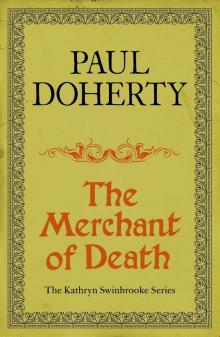 The Merchant of Death
The Merchant of Death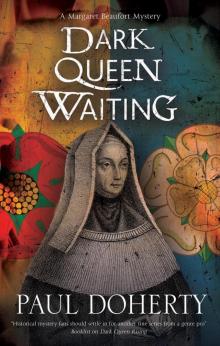 Dark Queen Waiting
Dark Queen Waiting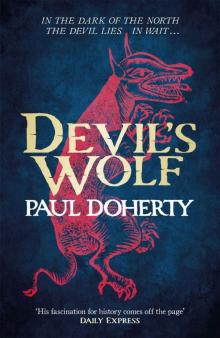 Devil's Wolf
Devil's Wolf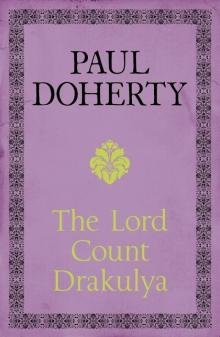 The Lord Count Drakulya
The Lord Count Drakulya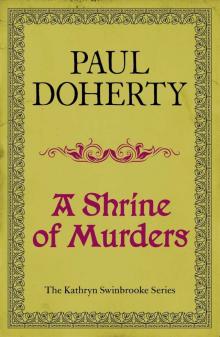 A Shrine of Murders
A Shrine of Murders The Eye of God
The Eye of God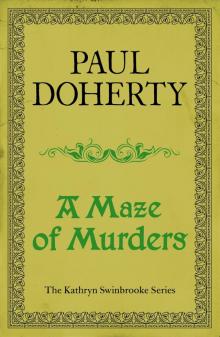 A Maze of Murders
A Maze of Murders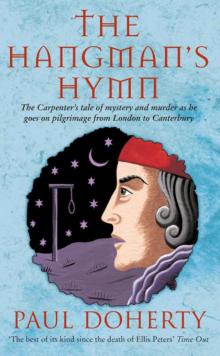 The Hangman's Hymn
The Hangman's Hymn The Godless
The Godless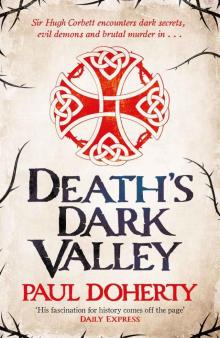 Death's Dark Valley
Death's Dark Valley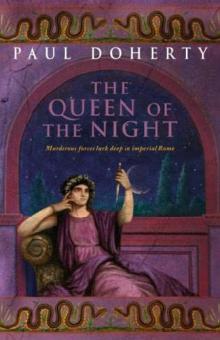 Queen of the Night ar-4
Queen of the Night ar-4 Ghostly Murders
Ghostly Murders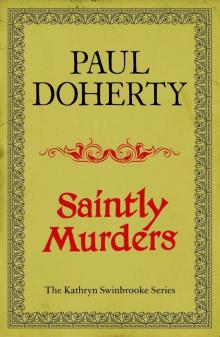 Saintly Murders
Saintly Murders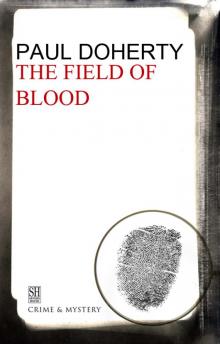 The Field of Blood
The Field of Blood Hugh Corbett 10 - The Devil's Hunt
Hugh Corbett 10 - The Devil's Hunt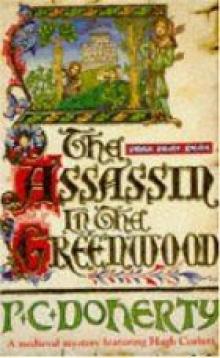 Assassin in the Greenwood hc-7
Assassin in the Greenwood hc-7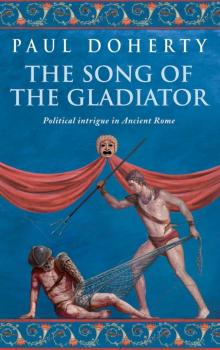 The Song of the Gladiator
The Song of the Gladiator Hugh Corbett 17 - The Mysterium
Hugh Corbett 17 - The Mysterium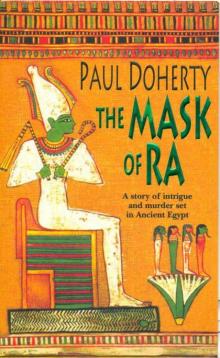 The Mask of Ra
The Mask of Ra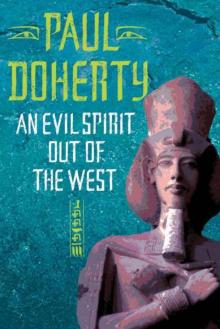 An Evil Spirit Out of the West (Ancient Egyptian Mysteries)
An Evil Spirit Out of the West (Ancient Egyptian Mysteries) Herald of Hell
Herald of Hell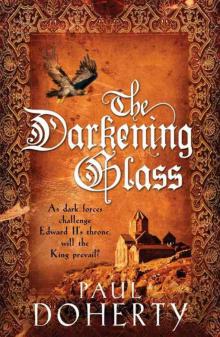 Mathild 03 - The Darkening Glass
Mathild 03 - The Darkening Glass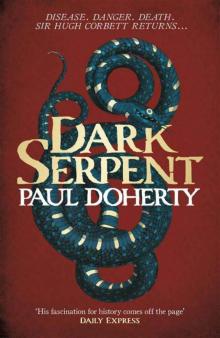 Dark Serpent (Hugh Corbett 18)
Dark Serpent (Hugh Corbett 18)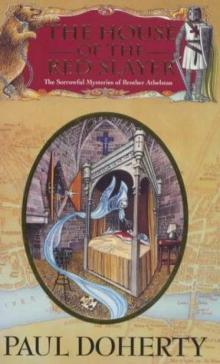 House of the Red Slayer smoba-2
House of the Red Slayer smoba-2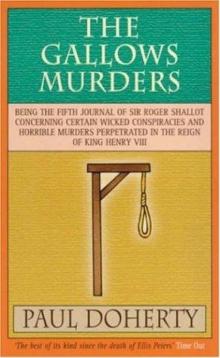 The Gallows Murders
The Gallows Murders The Straw Men
The Straw Men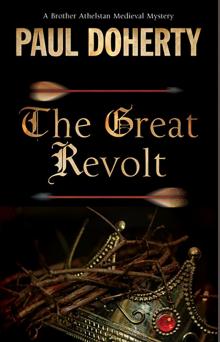 The Great Revolt
The Great Revolt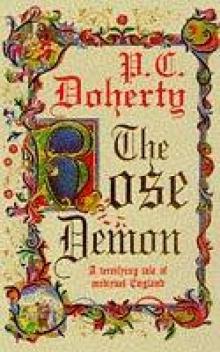 The Rose Demon
The Rose Demon By Murder's bright light smoba-5
By Murder's bright light smoba-5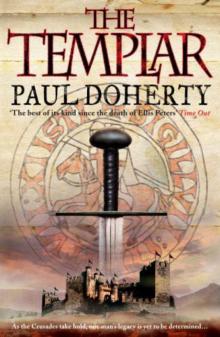 Templar
Templar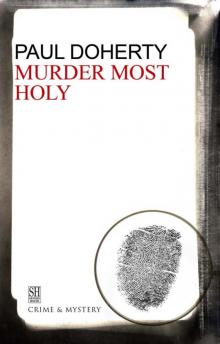 Murder Most Holy
Murder Most Holy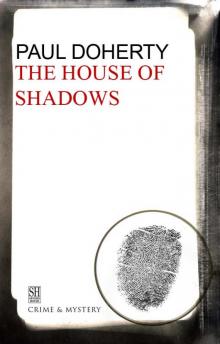 The House of Shadows
The House of Shadows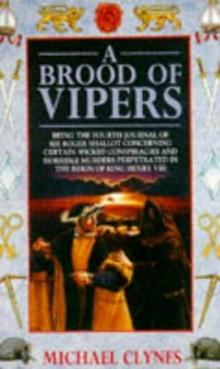 A Brood of Vipers srs-4
A Brood of Vipers srs-4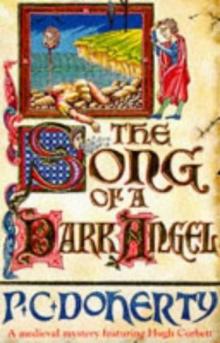 Song of a Dark Angel hc-8
Song of a Dark Angel hc-8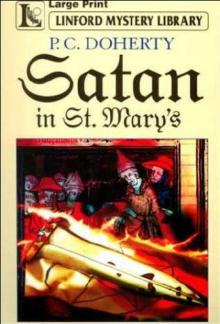 Satan in St Mary hc-1
Satan in St Mary hc-1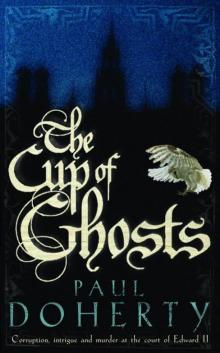 Mathilde 01 - The Cup of Ghosts
Mathilde 01 - The Cup of Ghosts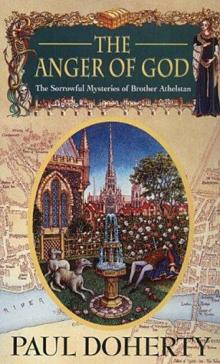 The Anger of God smoba-4
The Anger of God smoba-4 Isabella and the Strange Death of Edward II
Isabella and the Strange Death of Edward II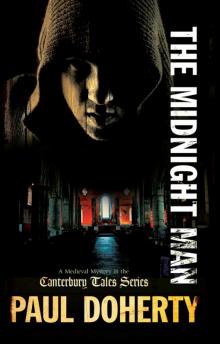 The Midnight Man ctomam-7
The Midnight Man ctomam-7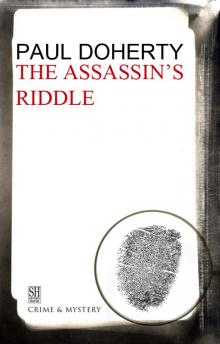 The Assassin's Riddle
The Assassin's Riddle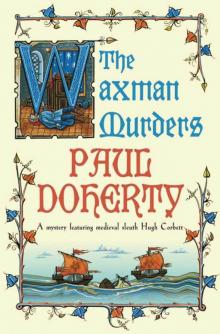 Hugh Corbett 15 - The Waxman Murders
Hugh Corbett 15 - The Waxman Murders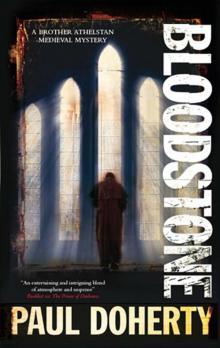 Bloodstone smoba-11
Bloodstone smoba-11 Bloodstone
Bloodstone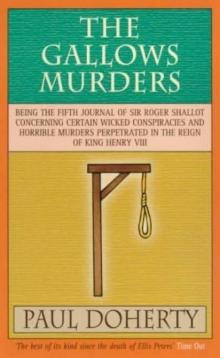 The Gallows Murders srs-5
The Gallows Murders srs-5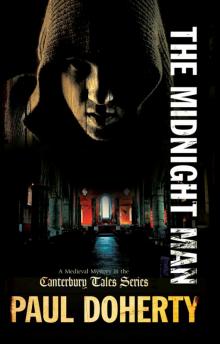 The Midnight Man
The Midnight Man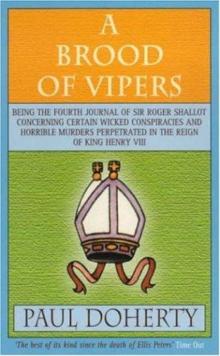 A Brood of Vipers
A Brood of Vipers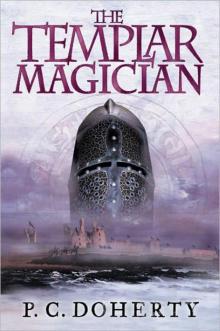 The Templar Magician
The Templar Magician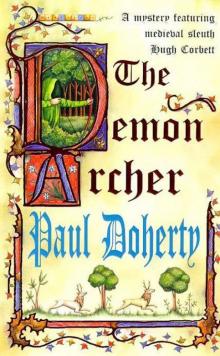 Hugh Corbett 11 - The Demon Archer
Hugh Corbett 11 - The Demon Archer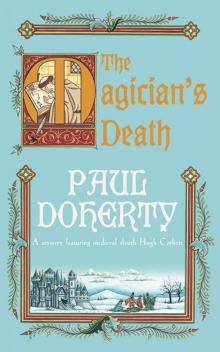 Hugh Corbett 14 - The Magician's Death
Hugh Corbett 14 - The Magician's Death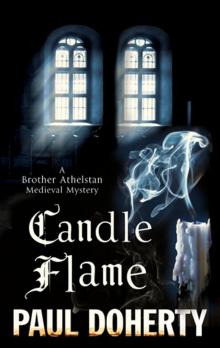 Candle Flame
Candle Flame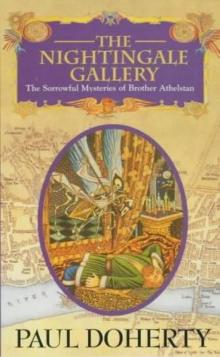 The Nightingale Gallery smoba-1
The Nightingale Gallery smoba-1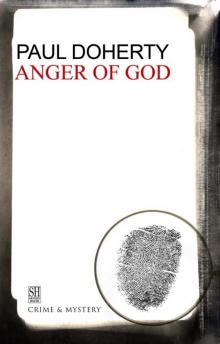 The Anger of God
The Anger of God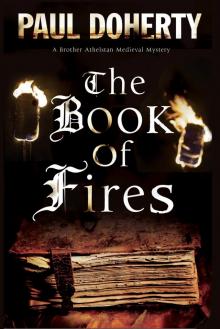 The Book of Fires
The Book of Fires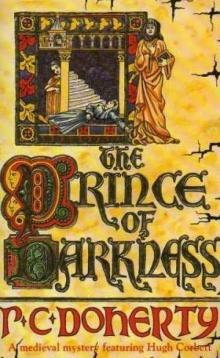 Prince of Darkness hc-5
Prince of Darkness hc-5 The House of Crows smoba-6
The House of Crows smoba-6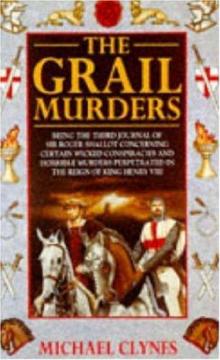 The Grail Murders
The Grail Murders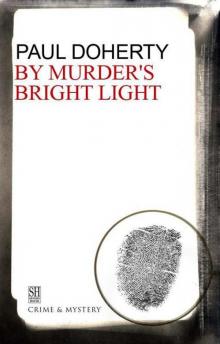 By Murder's Bright Light
By Murder's Bright Light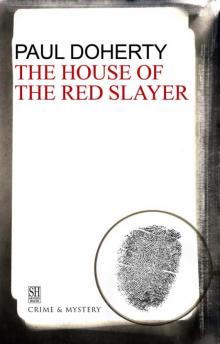 House of the Red Slayer
House of the Red Slayer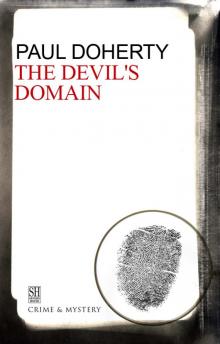 The Devil's Domain
The Devil's Domain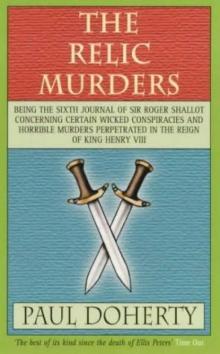 The Relic Murders srs-6
The Relic Murders srs-6 A haunt of murder ctomam-6
A haunt of murder ctomam-6 The Straw Men smoba-12
The Straw Men smoba-12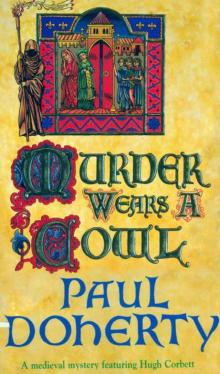 Hugh Corbett 06 - Murder Wears a Cowl
Hugh Corbett 06 - Murder Wears a Cowl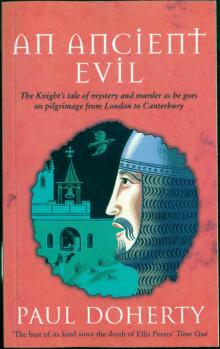 An Ancient Evil (Canterbury Tales Mysteries)
An Ancient Evil (Canterbury Tales Mysteries)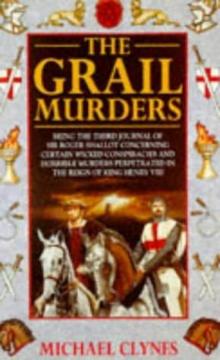 The Grail Murders srs-3
The Grail Murders srs-3 The Fate of Princes
The Fate of Princes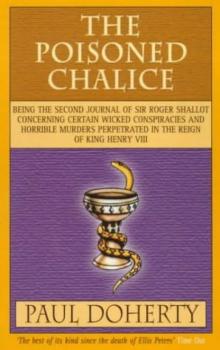 The poisoned chalice srs-2
The poisoned chalice srs-2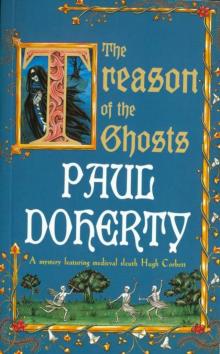 Hugh Corbett 12 - The Treason of the Ghosts
Hugh Corbett 12 - The Treason of the Ghosts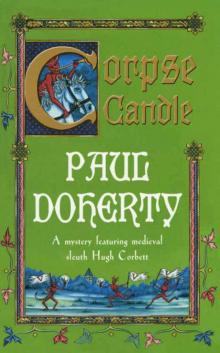 Hugh Corbett 13 - Corpse Candle
Hugh Corbett 13 - Corpse Candle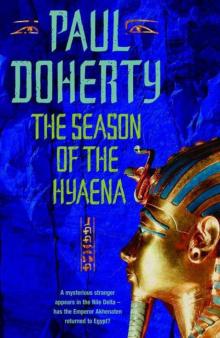 The Season of the Hyaena (Ancient Egyptian Mysteries)
The Season of the Hyaena (Ancient Egyptian Mysteries)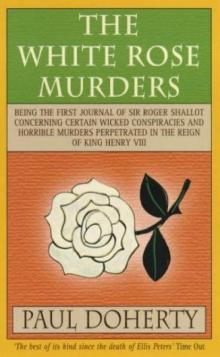 The White Rose murders srs-1
The White Rose murders srs-1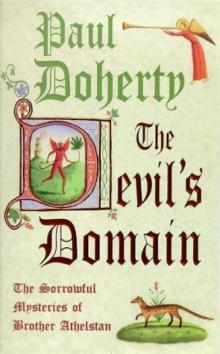 The Devil's domain smoba-8
The Devil's domain smoba-8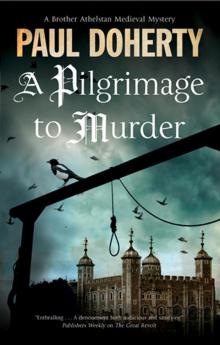 A Pilgrimage to Murder
A Pilgrimage to Murder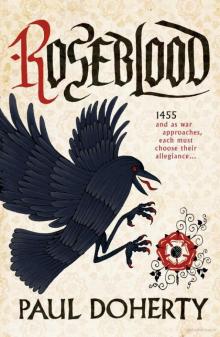 Roseblood
Roseblood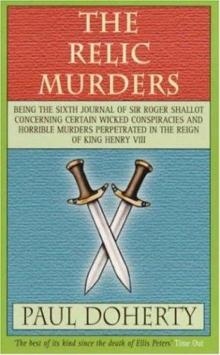 The Relic Murders
The Relic Murders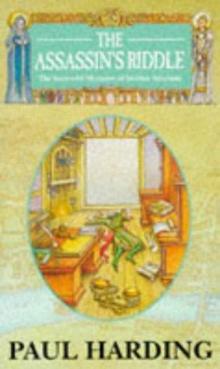 The Assassin's riddle smoba-7
The Assassin's riddle smoba-7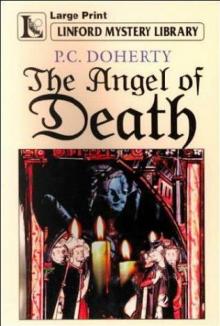 Angel of Death hc-4
Angel of Death hc-4 Dark Queen Rising
Dark Queen Rising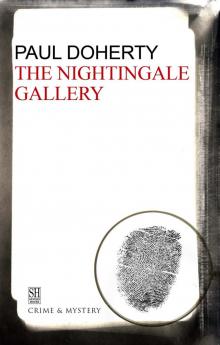 The Nightingale Gallery
The Nightingale Gallery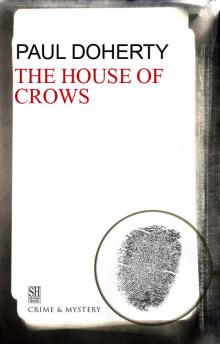 The House of Crows
The House of Crows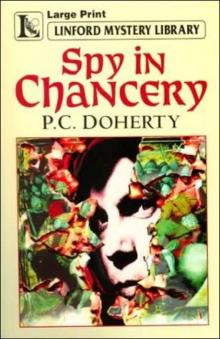 Spy in Chancery hc-3
Spy in Chancery hc-3